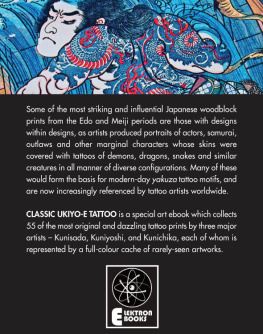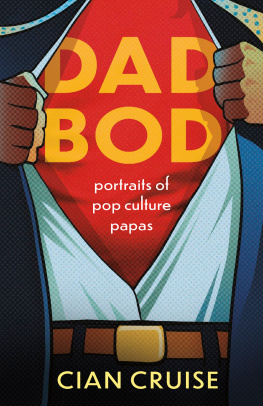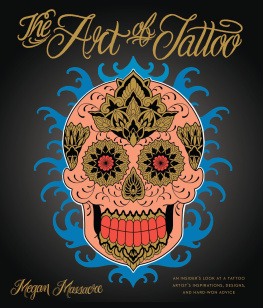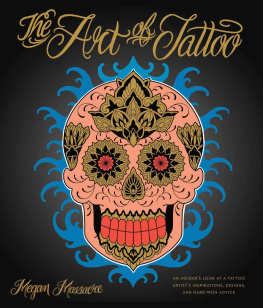Copyright 2008 by Kip Fulbeck.
Foreword Copyright 2008 by Takahiro Kitamura.
All rights reserved. No part of this book may be reproduced in any form without written permission from the publisher.
The Library of Congress has previously cataloged this title under ISBN: 978-0-8118-6131-1
Designed by Brett MacFadden.
Acknowledgments
My thanks and love to my parents and family for their constant support, even when I fled premed for a lifetime of making art, buying guitars, getting tattooed, and pursuing other things not listed on the Asian family to do list.
Thanks to the many friends who helped out with this project: Kris Andrews, Lindsay Castro, Jonathan Cecil, Tim Connelly, Adam Day, Seymour Duncan, Al and France Garcia, Manny Garcia, Jim Goldberg, Mariko Gordon, Jake Jacobson, Ethan Kaplan, Carianne Laguna, Rachel Lithgow, Horacio Martinez, Quinn Messmer, Saudia Mills, Dan The Nazz Nazzareta, Paul Nelson, Permanent Mark, Ken Phillips, Kara Richardson, Jessica Sonquist, Joey Souza, Splinter and Diablo, Tim Stephens, Kellie Stoelting, Tian Tang, Josh Thomas, Tynisa Winslow, the staffs of the Japanese American National Museum and the UCSB Department of Art, and the UCSB Academic Senate for its generous support.
Thank you again to the wonderful crew at Chronicle Booksparticularly Brett MacFadden, Patti Quill, and my amazing (and patient) editor, Bridget Watson Payne. Thanks to my superagent, Faye Bender; my multivernaculared research assistant, Jessica Hulce; and my students, who are a never-ending source of challenge and reality checks. Thank you to Phel Steinmetz for being my teacher always. And thank you to Horitomo, Horitaka, and Horiyoshi III Sensei, for honoring me with their work; with particular thanks to Horitaka for his friendship and guidance.
My special thanks to Michael Velasquez for his generosity, vision, and skill; and to my lovely wife, Heather, for her strength, loyalty, and caring.
I am indebted to each and every individual who took the time to share their bodies and stories for this project, opened their homes and businesses to me, offered words of encouragement and support, and found meaning in personal narrative. Vita non est vivere sed valere vita est .


Foreword
Why do you do it? This may in fact be one of the most common questions directed at the tattooed, and is closely related and just as confusing as the question What does it mean? And there is no easy or all-conclusive answer. People get tattooed for a wide spectrum of reasonsgroup identity, lack of group identity, joy, sorrow, hate, love, drunken stupor, insecurity, security, affirmation.... The reasons are endless, and as varied as human nature, imagination, and emotion.
I began collecting tattoos when I was in high school, and at that time I think they were connected to a variety of motivating factors. Though I find it hard to pinpoint exactly (teenage rebellion and art appreciation were certainly influential reasons), I do know that I just wanted them. And since then, I have continued to collect... sometimes in commemoration of an event or time, to mark friendship or love, or maybe to prove something to myself. Oftentimes, I have been tattooed in order to receive a tattoo from a particular person. This exchange often has nothing to do with art, but more with friendship or respect. There have been a few of these done by people who are not tattooers and ended up doing their first, and probably only, tattoo on me. Other times, I have simply admired tattoo art. And despite what the TV programs tell you, no one has to die for you to get tattooed. Tattoos can have some deep profound meaning, but they dont have to. I would remind people to take what they see on TV or read in books with a grain of salt.
So why do we do it? It seems like this is a topic that is overdiscussed and overanalyzed, particularly in the scholarly arena. Being a tattooed person and a tattooer focusing on the Japanese style of art myself, I came across one such conjecture that strikes me as grossly unfair and worthy of rebuttal.
Early Chinese reports and archaeological findings evidence Japanese tattoos and body arts dating back thousands of years. In the current world of Japanese tattooing, the bodysuit design affecting the appearance of a large area of the body is salient. The roots of this current incarnation of Japanese tattooing are in popular arts of the Edo period (16031867). There is speculation and debate about the origins of this type of tattooing, and I repeatedly hear scholarly theories asserting that the large style of tattooing was created in order to cover and hide penal tattooing. It is true that the Japanese government once employed what is probably one of historys grossest misuses of the tattoo needletattooing those convicted with marks designating their alleged crimes. And because of this legacy, one can easily see how such a theory developed.
I find this theory to be particularly insulting, pessimistic, and laden with scholarly arrogance... arrogance combined not only with a large amount of ignorance of the tattoo profession, but also with no attempt at gaining understanding from an insider perspective. This happens largely because, until very recently, writings about tattooing rarely came from within the community and did not include the knowledge of a member of a group (in this case an underground groupby the way, thats underground , not underworld ). While I freely agree that individuals who were tattooed to cover convict marks existedas they do nowI find the notion that a beautiful art form was simply created as a disguise, or the implication that all of the tattooed were criminals, to be quite derisive. Ironically, if one studies diagrams of said penal tattooing marks, many are on the forehead and simply could not be covered with larger tattoo work. The majority of other marks are solid black armbands of varying number and size, slightly similar to the black tribal armband tattoo popular in the 90s in America. And as any working tattooer will tell you, these are quite difficult to cover well. Even in this era, with improved inks and the use of machines, masking solid black bands is a tall order. The covering of penal tattoos in old Japan probably existed, however poorly, but noncriminal firemen, artisans, and laborers were among those who celebrated tattooing as well.
Scholars tend to want to quantitatively analyze and understand everything, and there is a value to this. However, how do you quantitatively analyze a love song? Or why a certain painting may move you to tears? At their best, tattoos can be seen and appreciated as an art form. I think in some cases, such as in the Japanese tattoo, tattooing can even transcend art and embody a culture. But I dont think this is a requirement. Certainly not all tattoos can qualify in that mannernor do they have to. They can just be enjoyed. Tattoos, for better or worse, reflect the human experience. Our successes, joys, mistakes, and failures are all recorded on our skins. And just like life itself, sometimes they arent perfect. Sometimes theyre even tragic. But they are real. A tattoo is just ink in skin... it is up to the bearer to ascribe a meaning or value to it.














